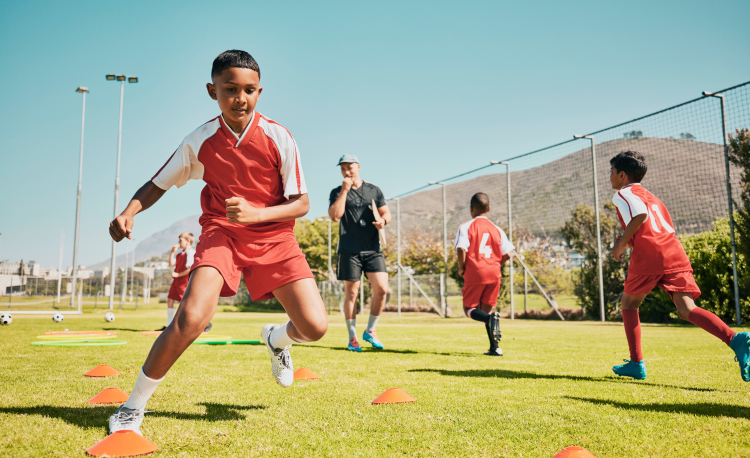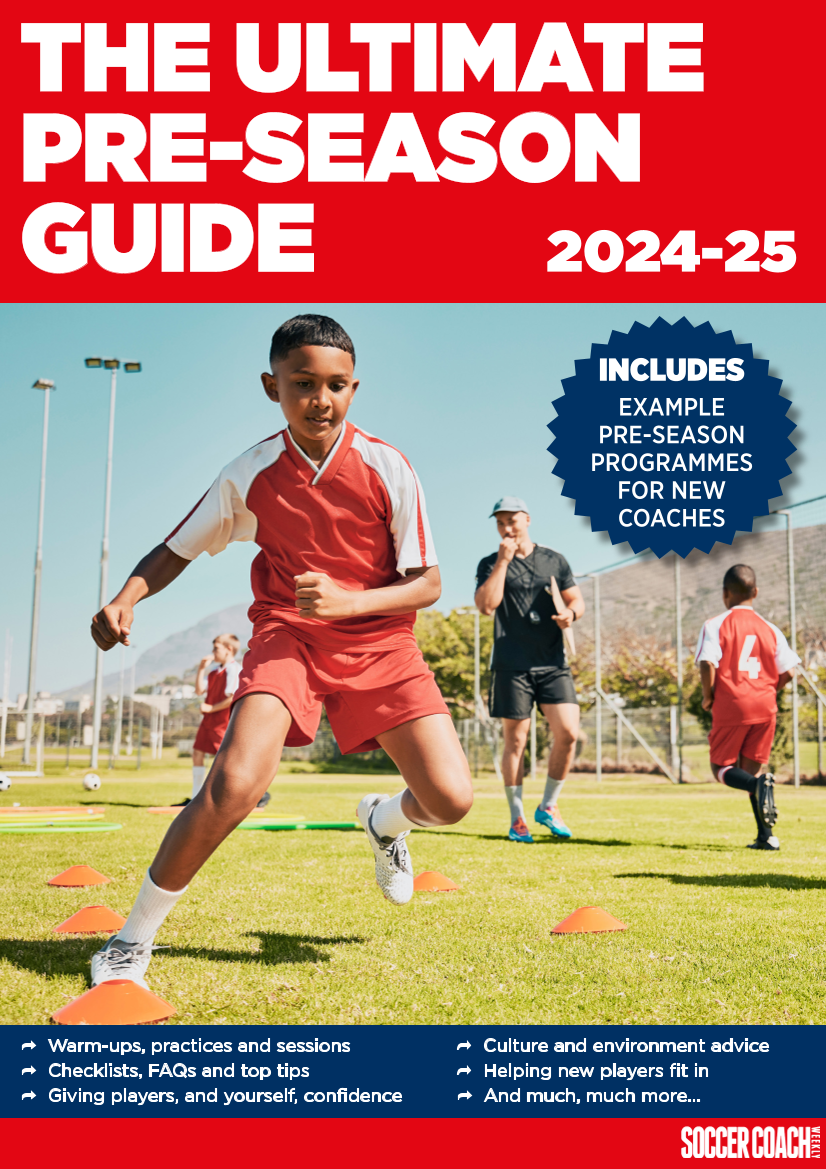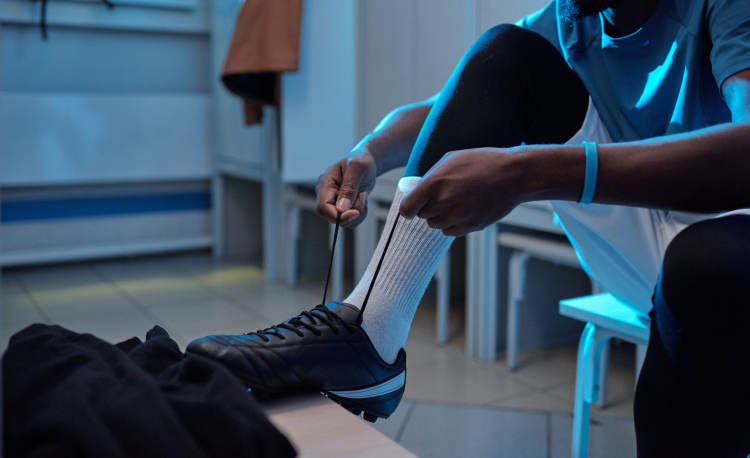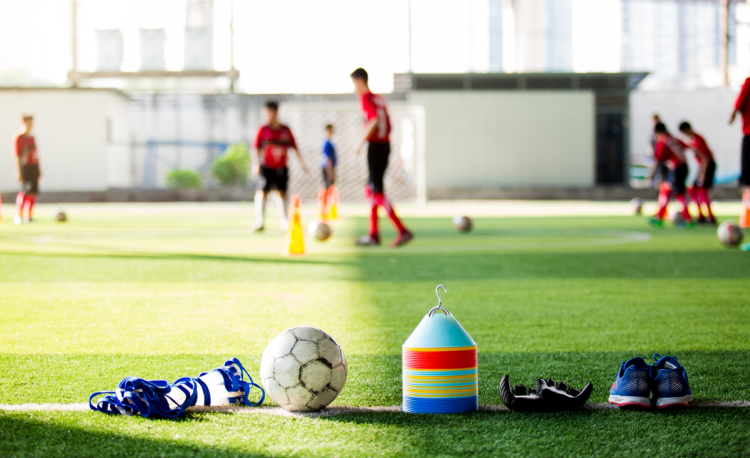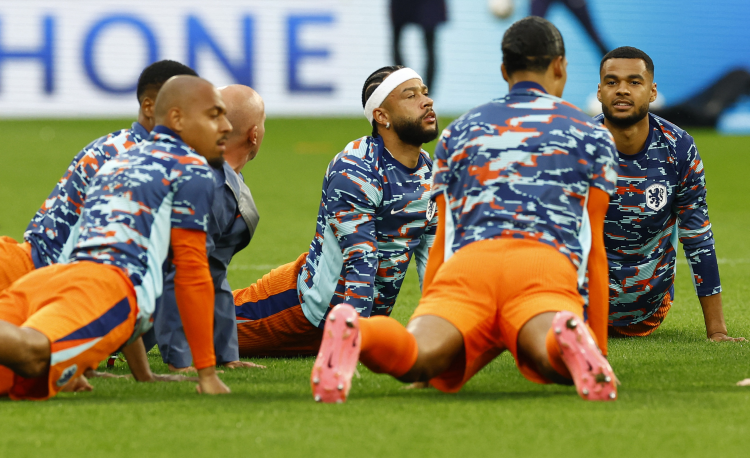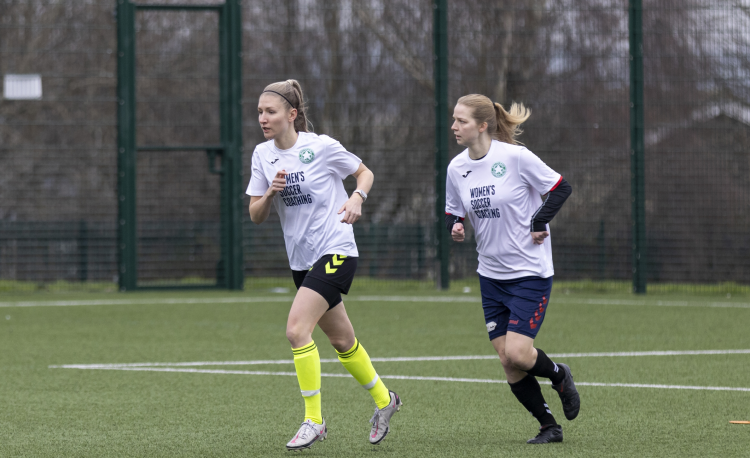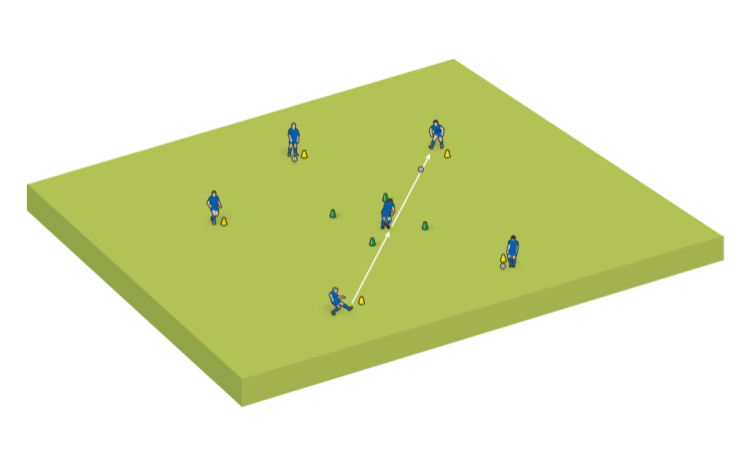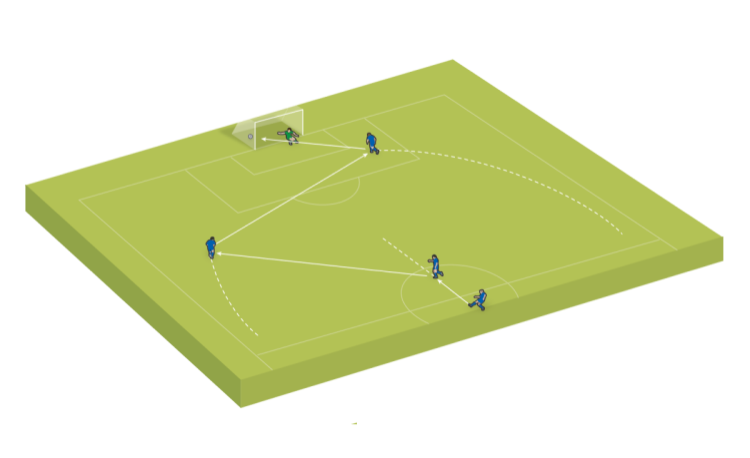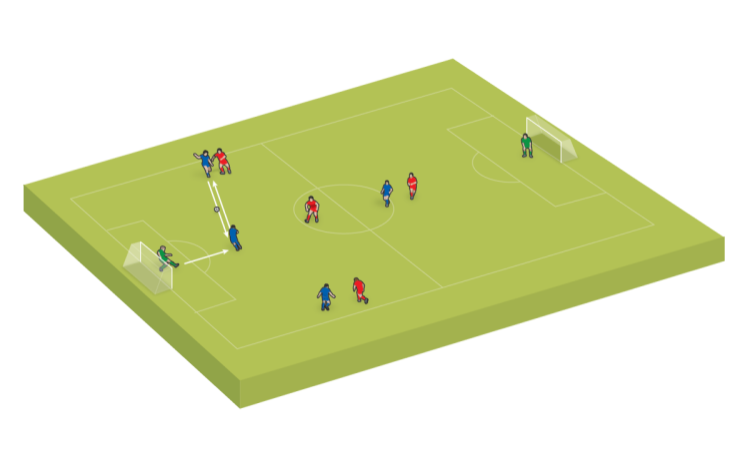What to include in your pre-season sessions
John Allpress, a former Tottenham Hotspur and Football Association player development coach, explores the elements that make up a successful tune-up.
Most youngsters who play soccer tend not to become unfit during the off season – they will often take part in other sports and generally stay fit and active.
The pre-season period is the time they reconnect with the game and recondition their bodies, getting their muscles and neural pathways used to playing and moving in a soccer way again.
The reconditioning work that pre-season brings to your players’ fitness levels will reduce their risk of getting injured when the rigours of the regular season begin.
The main ingredients of a good pre-season include:
- Increasing your players’ base strength and endurance capacity.
- Helping them to re-program the movement characteristics of football.
- Enhancing their gross and fine motor skills for the game, through lots of ball work.
- Personalising their readiness for match play, via focused, deliberate practice matches and coaching.
After taking the above into account, planning your pre-season work should not differ from any other time of the season, with a focus for players primarily on enjoyment, learning and practice.
The key elements of a pre-season session
A session can contain the following parts:
Dynamic group warm-up
This is aimed at raising the heart rate. It should include jogging, jumping, twisting and turning, but it shouldn’t include static stretching.
Given the fact that pre-season most often takes place during hot weather, it’s important to pay particular attention to the warm-up section of a session.
Here’s an example.
Technical warm-up
This is aimed at giving players lots of touches of the ball and should comprise unopposed multi-ball, multi-directional activities. A variety of shapes can be used to achieve this.
Some of my go-tos are: The passing box, Tricolour and Connecting.
Personalised session
This is focused, deliberate practice, aimed at addressing individual and unit needs. It is a game-based format.
Some of my go-tos are: Repetition circuit, End-to-end and back and Combat 2v2.
Group practice
This is aimed at building skilful play. It is a game-based format, with a clear objective and opportunities for decision-making. Playing in a big group will also lower the pre-season intensity.
The practice should reflect the rules of the game: It should be played on a rectangular pitch, with two goals placed centrally at either end. A halfway line should be marked out, with offside applying.
Work should be based on the principles of play, and coaches should intervene as little as possible to allow playing time to be maximised.
Small-sided game
This allows players to show the coach how clever and inventive they can be.
As with the group practice, it should reflect the rules of the game, and coach interventions should be kept to an absolute minimum.
Learn more about how to make the most of group practices and small-sided games.
Cool down
This is to allow players to get their bodies back to baseline state. It should include static stretching.
Here’s an example.
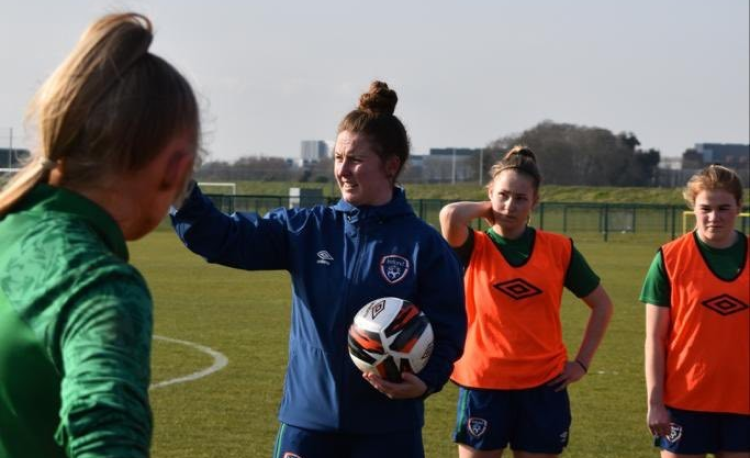
Coach interventions and challenges
Every coaching session presents learning opportunities for players.
For players to be given the best opportunity to progress, it’s important that the coach prepares the learning and practice focus for the players in detail. This focus can apply to individuals, units or the whole group.
One way to do this is by giving individuals, units or the whole group some challenges, specific to things they need to learn or improve on.
Challenges help to focus and direct learning. They can be given at the start of a practice, depending on what you want the players to achieve, or during a practice, based on what you observe.
The challenges can be given during the technical warm-up, personalised session, group practice or small-sided game.
One of the advantages of challenges is that they don’t require long intervention time – they are a way of getting in and getting out quickly to maximise ball-rolling time. They also allow for players to explore things for themselves.
It’s important not to overload players with challenges – allow them to take on one thing at a time – they will have a better chance of grasping it then.
It’s also important that challenges fit together. For example, if the group challenge is for players to get the ball into the front players as quickly as possible, a good challenge for the centre-backs would be to look to break the midfield line and play the ball into the forwards whenever they have the opportunity.
Finally, the way you phrase the challenge is important.
You want your players to see your suggestion as an option, rather than something they must do. This allows them to best work out when to employ what you’re suggesting, helping to support their decision making.
The following are examples of group, unit and individual challenges – both in-possession and out-of-possession – that coaches may consider using, based on the needs of their players.
In-possession challenges
Group challenges
- Aim to control possession of the ball in midfield areas, using combination passing.
- On regaining possession, aim to get the ball into your front players as quickly as you can.
- Look for opportunities to attack centrally, before going wide.
"It’s important not to overload players with challenges – allow one thing at a time..."
Unit challenges
Defensive unit
- On regaining the ball in your defensive third, if you have the space, be ready to run with it.
- Work out when it is best to play the ball to your midfield players, or play longer passes into the forwards.
- On regaining possession of the ball, look for opportunities to counter-attack quickly.
Midfield unit
- Try to let the ball run across your body and play forward as a first action.
- Decide if it is best to pass to feet or space.
- Recognise when, where and how your team-mates need support in front, behind and under the ball.
Attacking unit
- Look for opportunities to shoot one touch or set up a team-mate to do so.
- Try to shoot with a side-foot finish at the far post.
- Decide if it’s best to shoot or dribble in and around the penalty area.
Individual challenges
Goalkeeper
- Look for opportunities to pass the ball from your hands into your midfield players as often as you can.
- Work out the best supporting angle for a full-back with the ball facing their own goal.
- Be ready to set up attacks quickly after fielding the ball.
Full-backs
- Look for opportunities to receive the ball higher up the pitch than your deepest midfield player.
- Decide if it’s best to play forward quickly, or turn to change the direction of the attack.
- Be ready to overload midfield areas in order to gain a numerical advantage and support attacks.
Related Files

Centre-backs
- Try to serve your midfield players quickly with one or two touches.
- Be ready to give depth to your teammates if they decide to turn rather than play forward.
- Decide how best to deal with the ball coming at you at varying heights and speeds.
Defensive midfielders
- Try to see as much of the pitch as you can before you get the ball.
- Decide when it’s best to pass forward or switch the point of the attack by passing out wide.
- Look for opportunities to counter-attack quickly after an interception.
Central midfielders
- Look for opportunities to combine off one or two touches.
- Be ready to receive the ball under pressure from defenders.
- Try to turn and break a line with your first touch.
Attacking midfielders
- Look for opportunities to combine with your team-mates to create shooting opportunities.
- Work out when it’s best to pass, dribble or shoot.
- Try to travel as the ball travels when moving to support a team-mate.
"Centre-backs should try to serve midfield players quickly with one or two touches..."
Wingers
- Decide if it’s best to cross the ball early or late.
- Look for the opportunities to move inside the pitch and combine with your team-mates.
- Look for dribbling opportunities from a ball laid into your path.
Forwards
- Look for opportunities to shoot early on the volley or half-volley.
- Be ready to receive, turn and shoot for goal in one movement.
- Look for opportunities to use accuracy over power when shooting for goal.
Out-of-possession challenges
Group challenges
- Be ready to win the ball back within three passes.
- Look for opportunities to intercept and set up counter-attacks.
- Look to press opponents quickly as the ball travels to them.
- Try to win the ball back without tackling
Unit challenges
Defensive unit
- Work out when it’s best to mark your opponent or cover your team-mates.
- Be ready to defend the space behind you if your opponent on the ball is not pressured.
- Do not let the ball bounce.
Midfield unit
- Aim to stop your opposition playing forward, forcing them across the pitch away from your goal.
- Always try to see the ball and your opponent and be in between them and the goal.
- Stay compact and try not to be split by through passes into the space behind you.
Attacking unit
- Travel as the ball travels to pressure opponents.
- Try to make sure your opponent’s attacking play is predictable by ensuring they can only go one way.
- Aim to pressure the opposition into passing the ball over longer distances.
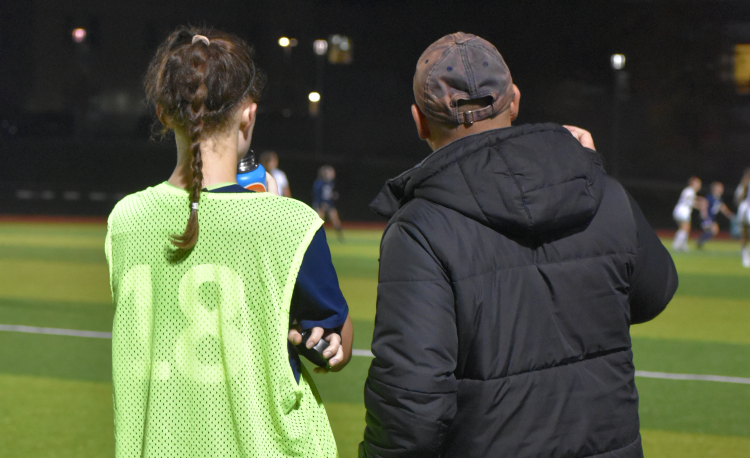
Individual challenges
Goalkeeper
- After getting into line to make a save, work out how far you can advance towards the ball before assuming the set-to-save position.
- Decide if it’s best to catch, punch or deflect the ball when dealing with an incoming cross.
- Work out when you can no longer hold your position at the near post and must move to defend the centre of your goal.
Full-backs
- Decide, as you are travelling to press, whether to intercept or stop your opponent turning with the ball.
- Decide, while the ball is travelling, if you can win the header at the far post or will have to disrupt your opponent’s clean contact.
- Work out when it’s best to change from covering your teammates to marking your direct opponent.
Centre-backs
- Work out when to change your marking position from the right to the left shoulder and vice versa.
- Decide when it’s best to mark your opponent closely or when it’s better to give ground.
- Look for opportunities to tackle or block if an opponent tries to turn inside the penalty area.
Defensive midfielders
- Be ready to recover centrally, marking your opponent if the ball is played beyond you.
- Look for opportunities to get touch-tight to your opponent to prevent turns in central areas.
- Try to see the ball and your opponent and stay in between them and the goal.
Central midfielders
- Look for opportunities to tackle your opponent if you arrive at the same time as the ball.
- If your opponent has composed possession, try to drive them across the pitch away from your goal.
- Work out how close you can get to an opponent to stop them from passing the ball forward.
Attacking midfielders
- If your opponent begins to run past you with the ball, work out ways to stop them without committing a foul.
- As the covering defender, decide how best you can support your pressing team-mate.
- Establish how best you can go about preventing the ball from being passed forward, in between you and your fellow midfielders.
Wingers
- Decide how to stop your direct opponent from passing the ball forward.
- Look for opportunities to force your opponent across the pitch to stop forward momentum.
- Look for opportunities to intercept and counter-attack.
Forwards
- Be ready to press defenders into playing long passes or giving the ball away.
- Travel as the ball travels to force defenders into predictable play.
- Once a defender has turned to face their own goal, look for opportunities to force them to pass backwards or tackle them if they attempt a turn.
COACHING QUESTIONS
Questions can be used during or after the practice, to help prompt further learning about these challenges. These could include:
- What did you notice when…?
- How does this help you?
- What stops you…?
- How will you know when to…?
- What were you thinking when you tried that?
- What if you could do…?
- How can you see what to do next?
Challenges and questions can also work together effectively. Some examples include:
- Let the ball run across your body and break a line as a first action. How does the pass you receive help you?
- Try to see as much of the pitch as you can before you get the ball. How does this make the pitch bigger for you?
- Try to turn and play forward quickly. How many touches do you need for success?
- Look for opportunities to lose your marker before you get the ball. When will you move away to a new space?
- Work out when it’s best to mark on the inside or outside shoulder. Which side helps you to intercept and set up counter-attacks?
- Try to by-pass as many defenders as you can with one pass. How do you know which pass is on to play next?
STRUCTURING A SESSION
Pre-season sessions typically run for one or two hours. The below examples give you an idea of how to structure these sessions using the elements listed and including challenges.
1-hour session
| 10 MINUTES | 15 MINUTES | 15 MINUTES | 15 MINUTES | 5 MINUTES |
| Personalised session 1 |
Group practice | Personalised session 2 |
||
| Dynamic group warm-up |
Group A: attacking challenges
Group B: defending challenges
Plus individual challenges |
Objective focused – e.g., "Try to get the ball into the front players as quickly as you can"
Plus unit and individual challenges |
Group A: defending challenges
Group B: attacking challenges
Plus individual challenges |
Cool down |
2-hour sessions
| 10 MINUTES | 15 MINUTES | 20 MINUTES | 20 MINUTES | 20 MINUTES | 15 MINUTES | 10 MINUTES |
| Personalised session 1 |
Group practice | Personalised session 2 |
Small-sided game | |||
| Dynamic group warm-up |
Technical warm-up
Group or individual challenges |
Group A: attacking challenges
Group B: defending challenges
Plus individual challenges |
Objective focused – e.g., "Try to get the ball into the front players as quickly as you can"
Plus unit and individual challenges |
Group A: defending challenges
Group B: attacking challenges
Plus individual challenges |
Objective focused – e.g., "Try to get the ball into the front players as quickly as you can"
Plus unit and individual challenges |
Cool down |
TOP TIPS FOR RUNNING A PRE-SEASON SESSION
Keep the following at the forefront of your thinking when planning and preparing any pre-season session:
- First and foremost, the session should be fun
- Remember players may be a little bit rusty and out of touch after some time away from the game
- Work with the ball as much as possible
- Keep interventions short and relevant as to maximise ball-rolling time
- Make your games and practices interesting, challenging and varied
- Personalise your work as much as possible through individual challenges, conditions and constraints
- Aim to keep the players guessing – there are many ways to do the same thing
- Encourage your players by catching them doing things well
Newsletter Sign Up
Coaches Testimonials

Gerald Kearney, Downtown Las Vegas Soccer Club

Paul Butler, Florida, USA

Rick Shields, Springboro, USA

Tony Green, Pierrefonds Titans, Quebec, Canada
Subscribe Today
Discover the simple way to become a more effective, more successful soccer coach
In a recent survey 89% of subscribers said Soccer Coach Weekly makes them more confident, 91% said Soccer Coach Weekly makes them a more effective coach and 93% said Soccer Coach Weekly makes them more inspired.
*includes 3 coaching manuals
Get Weekly Inspiration
All the latest techniques and approaches
Soccer Coach Weekly offers proven and easy to use soccer drills, coaching sessions, practice plans, small-sided games, warm-ups, training tips and advice.
We've been at the cutting edge of soccer coaching since we launched in 2007, creating resources for the grassroots youth coach, following best practice from around the world and insights from the professional game.
